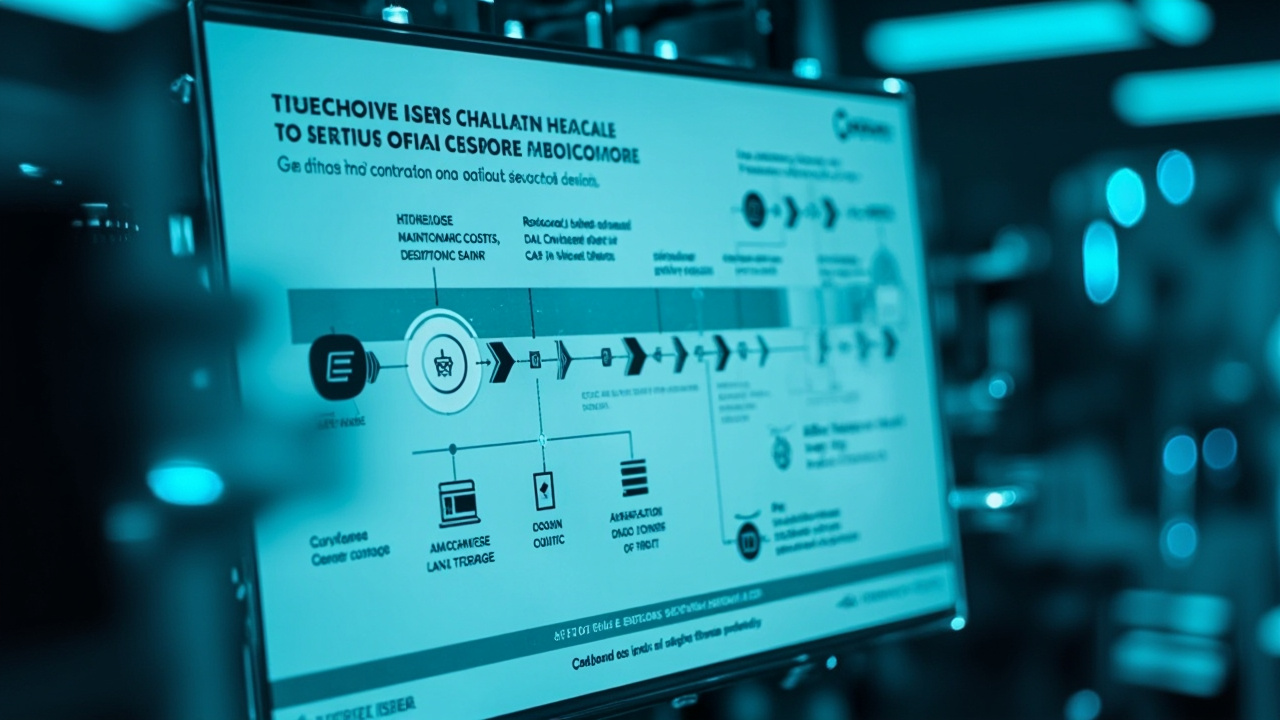The Future of Software Testing: Navigating the Complex Landscape with Advanced Techniques
Software testing is an indispensable aspect of the development process, ensuring that applications not only meet their intended functionality but also deliver a seamless user experience. In an era where software applications are becoming increasingly sophisticated, maintaining high quality is more challenging than ever before. Traditional testing methods often fall short in keeping pace with rapid development cycles, leading to potential vulnerabilities and defects slipping through the cracks.
The stakes are high: a single oversight can result in significant financial losses, damage to reputation, and erosion of customer trust. As such, organizations are seeking more robust solutions that can enhance their testing capabilities and streamline their processes. Enter the era of advanced software testing techniques, powered by innovations such as AI and machine learning, which hold the promise of transforming the landscape.
In this comprehensive exploration, we delve into the intricacies of software testing, the challenges faced by modern development teams, and the innovative solutions that are setting new benchmarks in quality assurance. Along the way, we will touch upon tools like GenQE that are revolutionizing the way testing is approached, helping teams deliver better products faster and more efficiently.
Understanding the Foundations of Software Testing

Before diving into the advanced methodologies reshaping the industry, it’s crucial to grasp the fundamental principles of software testing. At its core, software testing is about verifying that an application functions as intended, both in terms of correctness and performance.
The Basics of Software Testing
Software testing encompasses a variety of methods, each designed to uncover different types of issues. These methods include unit testing, integration testing, system testing, and acceptance testing. Each stage serves a unique purpose, from verifying individual components to evaluating the entire system against user requirements.
Unit testing, for instance, focuses on validating the smallest pieces of code, usually functions or methods, in isolation. It’s typically the first line of defense against defects, catching errors early in the development process. The importance of unit testing cannot be overstated, as it allows developers to verify that each component functions correctly before integration.
In contrast, integration testing examines how different modules interact with each other. This step is vital for identifying issues that might not be evident when modules function independently but become apparent when they must work together. Integration testing is particularly important in complex applications where multiple systems need to communicate seamlessly.
“Quality is never an accident; it is always the result of intelligent effort.” â John Ruskin
The Role of Testing in Modern Development
The principles of agile and DevOps have transformed how development teams approach software delivery. Continuous integration and continuous delivery (CI/CD) pipelines demand rapid iteration and deployment without compromising on quality. As a result, testing must be integrated seamlessly into the development cycle, often through automation, to maintain pace and efficacy.
Automated testing has emerged as a cornerstone of modern software development, enabling teams to execute tests quickly and consistently. However, automation is not a panacea; it requires careful planning to ensure that tests are reliable, maintainable, and comprehensive. The key to successful automated testing lies in striking the right balance between automated and manual testing, ensuring that each complements the other.
In this context, tools that support automated testing, such as Selenium or AI-enhanced platforms like GenQE, become invaluable. They can help streamline the testing process, allowing for more frequent releases without sacrificing quality. By reducing the time spent on repetitive testing tasks, developers can focus more on innovation and less on maintenance.
The Challenges of Traditional Testing Approaches

Despite the progress made in automating testing processes, traditional methods still encounter significant hurdles. These challenges underscore the need for more adaptive and intelligent solutions.
The Bottlenecks in Manual and Scripted Testing
Manual testing, while invaluable for exploratory and usability testing, is resource-intensive and prone to human error. It cannot scale effectively with the demands of complex, large-scale applications. Scripted testing, though automated, often suffers from high maintenance overhead.
Scripts are typically fragile, breaking with changes in application interfaces or underlying code structures. This fragility results in frequent updates and rework, diverting resources away from more strategic initiatives. For example, a simple change in the user interface can render a previously reliable test script obsolete, leading to potential gaps in coverage.
The limitations of scripted testing become even more pronounced in environments with continuous updates and rapid feature deployments. The high maintenance cost not only affects the timelines but also the morale of the testing teams, as they spend an inordinate amount of time updating and fixing scripts.
The Limitations of Conventional Test Automation
Conventional automated testing tools often lack the flexibility needed to adapt to dynamic environments. They rely heavily on predefined scripts which must be meticulously maintained as applications evolve. This rigidity makes it difficult to accommodate shifts in user requirements or changes in technology stacks.
Moreover, traditional tools may not provide deep insights into complex issues, necessitating additional layers of analysis and investigation. This lack of clarity can delay defect resolution and impact release timelines. As software systems grow more complex, the need for smarter, more adaptable testing solutions becomes evident.
In a world where software development is increasingly driven by user feedback and rapid iteration, traditional testing approaches struggle to keep pace. This gap opens opportunities for more intelligent, AI-driven solutions that can learn and adapt in real-time, offering a more sustainable model for long-term quality assurance.
Embracing AI-Powered Testing Solutions

The advent of AI and machine learning has introduced new paradigms in software testing, offering unprecedented levels of efficiency and accuracy. These technologies are particularly adept at addressing the limitations of traditional methods.
How AI Transforms Test Automation
AI-powered tools like GenQE utilize machine learning algorithms to generate, execute, and analyze test cases automatically. This capability reduces the dependency on manual intervention, freeing up resources for more strategic activities. GenQE, for instance, leverages historical data and user behavior to create comprehensive test suites that adapt as the application evolves.
AI’s ability to analyze vast amounts of data quickly and accurately enables more thorough testing than was previously possible. For example, AI can identify patterns and anomalies that may indicate defects, allowing teams to address potential issues before they escalate. This proactive approach not only enhances quality but also accelerates time-to-market.
“AI is not just a tool but a partner in innovation, transforming how we think about quality engineering.” â Anonymous Expert
The Benefits of Intelligent Test Execution
Intelligent test execution prioritizes test cases based on risk assessments, ensuring that critical functionalities are tested first. This targeted approach maximizes the impact of testing efforts, focusing resources on areas with the highest potential for defects. Tools like GenQE incorporate risk-based testing strategies to streamline and optimize test execution.
By focusing on high-risk areas first, intelligent testing ensures that the most critical issues are identified and resolved early in the development cycle. This prioritization helps prevent costly defects from reaching production, enhancing the reliability and user satisfaction of the final product.
Enhancing Test Coverage with AI
AI-driven platforms offer extensive test coverage across multiple environments, from web and mobile to APIs and cloud applications. This broad spectrum ensures that applications perform consistently across diverse user scenarios and platforms, reducing the risk of unforeseen issues in production environments.
For instance, an AI-powered testing tool can simulate thousands of user interactions in a matter of minutes, providing insights into how an application performs under various conditions. This level of coverage is difficult, if not impossible, to achieve with manual testing alone.
Self-Healing Capabilities: Reducing Maintenance Overhead

One of the standout features of AI-powered testing solutions is their ability to self-heal. This capability addresses one of the most significant pain points in test automation: the maintenance of test scripts.
What is Self-Healing Automation?
Self-healing automation refers to the ability of a testing framework to adapt to changes in the application without manual intervention. When UI elements change or evolve, traditional scripts often fail, requiring updates and modifications. Self-healing scripts, however, can automatically adjust to these changes, minimizing downtime and maintenance efforts.
The concept of self-healing is particularly beneficial in agile environments, where changes are frequent and often unpredictable. By automatically adapting to these changes, self-healing automation reduces the burden on development teams, allowing them to focus on feature development rather than script maintenance.
The Impact on Development Cycles
By reducing the need for constant script updates, self-healing capabilities significantly decrease the time and resources spent on test maintenance. This reduction allows development teams to focus on enhancing application features and quality rather than troubleshooting broken tests.
The time saved through self-healing automation translates to faster release cycles and more efficient use of resources. For organizations aiming to deliver continuous value to their users, these efficiencies can provide a significant competitive advantage.
Real-World Applications of Self-Healing
In practice, self-healing technology can transform the efficiency of testing processes. For instance, a large e-commerce platform with a frequently updated user interface can benefit greatly from self-healing scripts. As UI components change, the testing framework adapts automatically, ensuring continuous validation without disruption.
Consider the case of a financial services company that implemented self-healing automation in its mobile banking application. By doing so, the company was able to reduce script maintenance efforts by 40%, allowing its development team to focus on enhancing the user experience and adding new features.
Integrating Testing into the DevOps Pipeline

For organizations practicing DevOps, integrating testing within the CI/CD pipeline is crucial. This integration ensures that quality checks are an intrinsic part of the development process, enabling rapid feedback and continuous improvement.
The Role of CI/CD in Modern Testing
CI/CD pipelines automate the process of building, testing, and deploying applications, facilitating faster and more reliable software delivery. Testing must be integrated into these pipelines to ensure that quality does not become a bottleneck in the release process.
“In a world where speed is paramount, integrating testing into the DevOps pipeline is no longer optionalâit’s essential.” â DevOps Specialist
CI/CD practices emphasize the importance of automated testing at every stage of the development lifecycle. By embedding testing into the pipeline, organizations can ensure that code changes are validated continuously, reducing the risk of defects slipping into production.
How GenQE Enhances Pipeline Integration
Platforms like GenQE offer seamless integration with popular CI/CD tools such as Jenkins, GitHub Actions, and Azure DevOps. This integration allows automated testing to be a natural part of the development workflow, ensuring that quality is assessed continuously and issues are identified early.
The ability to integrate seamlessly with existing tools and processes is a key advantage of modern testing platforms. By aligning with DevOps practices, these platforms help organizations achieve faster, more reliable releases while maintaining high standards of quality.
The Benefits of Continuous Testing
Continuous testing, facilitated by AI-powered platforms, provides real-time insights into application quality. It enables teams to detect and address defects promptly, reducing the risk of critical issues reaching production. This proactive approach enhances overall software reliability and user satisfaction.
A real-world example of the benefits of continuous testing can be seen in a large technology company that integrated AI-driven testing into its CI/CD pipeline. By doing so, the company reduced the time required to identify and resolve defects by 30%, leading to more frequent releases and improved customer satisfaction.
Advanced Analytics and Reporting: Making Informed Decisions

In the realm of software testing, data is a powerful ally. Advanced analytics and reporting capabilities empower teams to make informed decisions based on comprehensive insights into testing processes and application quality.
The Power of Data-Driven Testing
Data-driven testing involves leveraging data analytics to optimize testing strategies and improve outcomes. By analyzing test data, teams can identify patterns, trends, and anomalies that may indicate potential defects or areas for improvement.
The ability to harness data effectively can transform the testing process, providing insights that enable teams to fine-tune their strategies and enhance their overall approach to quality assurance. This data-driven approach ensures that testing efforts are aligned with business goals and user needs.
Insights from AI-Driven Analytics
AI-powered platforms like GenQE provide detailed dashboards and analytics, offering deep insights into testing trends and software quality metrics. These insights enable teams to track progress over time, identify areas of risk, and make data-driven decisions to enhance testing strategies.
For example, an AI-driven analytics tool might reveal that a particular feature consistently leads to user dissatisfaction due to performance issues. Armed with this information, development teams can prioritize performance enhancements, ensuring a smoother user experience.
Case Study: Leveraging Analytics for Quality Assurance
Consider a financial services company aiming to improve the reliability of its mobile banking application. By utilizing AI-driven analytics, the company identified patterns of defects related to specific user interactions. Armed with this knowledge, the development team prioritized testing efforts on high-risk areas, significantly reducing the occurrence of issues in subsequent releases.
This proactive approach not only improved the application’s reliability but also enhanced user satisfaction and trust, ultimately leading to increased customer retention and business growth.
Conclusion: Paving the Way for Future Innovations

As software applications continue to evolve, the importance of robust testing methodologies cannot be overstated. The integration of AI and machine learning into software testing processes marks a significant step forward, offering solutions to challenges that have long plagued traditional methods.
While GenQE and similar platforms provide cutting-edge capabilities, they represent just one part of a broader movement towards intelligent, automated testing. By embracing these innovations, organizations can enhance their testing processes, accelerate development cycles, and ultimately deliver higher quality software to their users.
In conclusion, the future of software testing lies in the intelligent application of technology to overcome complex challenges. As we move towards this future, the tools and techniques we adopt will play a critical role in shaping the landscape of software quality engineering.
“The future of software testing is bright, driven by innovation and an unwavering commitment to quality.” â Industry Thought Leader
For those interested in exploring these advancements further, consider diving into the world of AI-powered testing tools like GenQE. They offer opportunities to revolutionize testing processes and elevate software quality to new heights.
Discover More Innovative Solutions
Want to learn more about the tools and technologies discussed in this article? Explore how these innovations can be tailored to your specific needs and workflow requirements.
Our team of experts is available to answer your questions and provide personalized insights into how modern solutions like GenQE can address your specific challenges.
